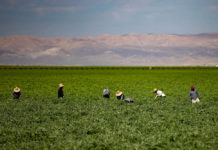“Why doesn’t someone do something about all the trash in the creek?” This question from an 11 year old girl scout surprised me. Dozens of energetic volunteers surrounded us scouring the banks of Santa Rosa Creek along the Prince Memorial Greenway for trash washed down by the winter rains. I started to explain that many people were indeed doing something, only to be interrupted by her observation that cut to the quick of any storm water program, “Yes, but if people were really doing something, we wouldn’t have to be here cleaning up after them.”
Everywhere in the Russian River Watershed we are surrounded by creeks. Some of the primary creeks include Forsythe Creek, Orr Creek, Dry Creek, Big Sulphur Creek, Austin Creek, Mark West Creek, Santa Rosa Creek and the Laguna de Santa Rosa. There are also many smaller creeks running through our communities. Many of us live within a short walk of a creek or a creekside trail system. These creeks provide us with open space, wildlife habitat, flood control, and recreational opportunities.
Throughout Mendocino and Sonoma Counties there are programs to prevent pollutants from entering creeks through the roadside ditches and pipes of storm drain systems. All of the various storm water programs depend on an informed and proactive community to keep creeks clean and healthy. How many of the following eight things are you doing to help take care of your local creeks?
1. Educate yourself
Start by learning about your neighborhood creek. Where does it come from? Where does it go? Does water flow all year round? What plants are growing along the creek? Is there habitat for birds and other animals?
2. Put litter in its place
You can help by keeping the street gutters or ditches in your neighborhood clean – free of trash, leaves, and yard clippings – to prevent street flooding and water pollution. Unfortunately, many people don’t know that whatever enters storm drains in streets and parking lots flows directly to creeks without treatment. Only indoor drains (sinks, showers, toilets) are treated at a wastewater treatment plant. If you see litter, pick it up. If not you, then who?
3. Pick up your poo
Be sure to clean up after your pet; bring a bag whenever your dog takes you for a walk. Keep back yard dog and cat waste cleaned up. Remind others to do the same. Dog waste contains bacteria and parasites that can foul creeks.
4. Maintain your car
Take care of your creek by keeping your car well maintained and leak free. Until repairs are made, capture oil drips on cardboard, clean up fluid leaks and spills with kitty litter or other absorbent material.
5. Use a car wash facility
Try to take your car to a car wash where wash water is contained and recycled. Or find a grassy area that will absorb the water. Dirt and grease washed off cars in streets and driveways will eventually enter the storm drain system. Even biodegradable soap can pollute creeks before it has time to break down.
6. Sponsor wildlife
Create wildlife habitat around your home using California native plants that provide food and shelter for birds and other animals. Put up a birdhouse or try a birdbath.
7. Enjoy your creek
A fun way to help is to get out and enjoy the many trails that follow urban creeks. Let your local storm water program know what needs attention. Citizens can report problems along creeks, such as trash, encampments, trail maintenance needs, water pollution, neighborhood safety, graffiti, and flooding concerns.
In return, the cities and county should make every effort to provide timely and effective response to citizens’ concerns regarding creek related maintenance, environmental, safety, and recreational issues.
8. Volunteer
Creeks need your help. Find an opportunity to volunteer with a creek restoration project. The Friends of Gibson Creek, Creek Stewardship Program, Laguna Keepers, and Cotati Creek Critters are just a few examples in our watershed and they are great places to start. Creek clean ups make wonderful projects for clubs, youth groups, or students searching for community service opportunities.
To learn more about how you can help a creek near you check Additional StormwaterResources on the Russian River Watershed Association’s webpage at http://rrwatershed.org/node/171.
This article was authored on behalf of RRWA by Alistair Bleifuss, coordinator of the Creek Stewardship Program for the Sonoma County Water Agency and the City of Santa Rosa. Alistair can be contacted at 543-3845 or ab*******@sr****.org. RRWA (www.rrwatershed.org) is an association of local public agencies in the Russian River Watershed that have come together to coordinate regional programs for clean water, fisheries restoration, and watershed enhancement.
50.1
F
Healdsburg
April 20, 2025







